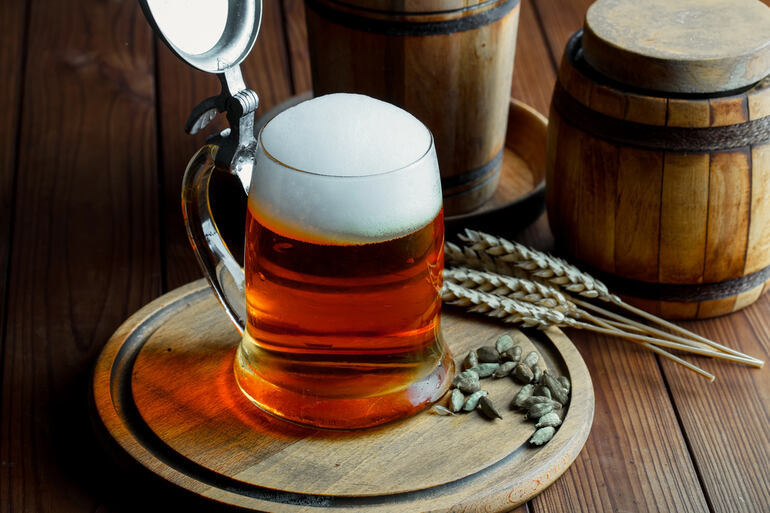Homebrewing is a fascinating intersection of science and art. Precision, controlled fermentation, and chemistry are essential for achieving consistency and quality, while creativity, intuition, and experimentation allow brewers to push boundaries and craft unique flavors. The balance between these elements is what makes homebrewing such a rewarding pursuit for beer enthusiasts.
Homebrewing science or art, it depends on the brewer’s approach. Some meticulously measure every variable—temperature, pH, yeast pitch rates—to replicate a specific style with precision. Others embrace experimentation, testing unconventional ingredients, wild fermentation, or hybrid techniques to create something entirely new. Whether following a rigid scientific method or letting creativity lead the way, homebrewers, professional brewers, and brewery suppliers all contribute to the ongoing evolution of beer.
The Science Behind Home Brewing
The fundamental aspect of brewing exists as a scientific practice. The production of beer occurs through a precise management system of biochemical reactions involving grains along with hops yeast and water components. The search for someone to assist in a brewing-related capstone project generally starts when students seek help through “Who can write my capstone project.” The entire brewing sequence starting with mashing until fermentation requires craft beer science principles to create a perfectly balanced beer.
Mashing and Enzymic Reactions
It begins with mashing, where crushed malted barley is mixed with hot water. The heat initiates enzymes like amylase, which hydrolyze the complex starches to fermentable sugars. The temperature and time must be strictly regulated because any variations can impact the body and sweetness of the beer.
Boiling and Hop Utilization
Following the mash, the liquid (wort) is boiled and hopped. Boiling is when sterilization and extraction of bitterness by the hops from the wort take place. Hop additions during the boil control the aroma, flavor, and bitterness of the final brew. Brewing science holds that hop variety, alpha acid level, and boiling time have their distinct contributions.
Fermentation and Yeast Activity
Yeast also ferments the sugars into alcohol and carbon dioxide. Different strains of yeast impart unique flavors and aromas. Yeast action is temperature-sensitive—too warm, off-flavors develop. Too cool, fermentation is inhibited. The way yeast behaves is one of the most critical home brewing practices that make good beer excellent beer.
Conditioning and Carbonation
After fermentation, the beer is conditioned, allowing the flavor to mature and mellow. Natural carbonation occurs when residual yeast ferments priming sugar in kegs or bottles to produce the ideal fizz. Advanced brewers also carry out CO₂ infusion under controlled conditions.
The Art of Home Brewing
While science promises quality and consistency in the brew, art brings personality and creativity to the brewing process. The majority of home brewers experiment with flavors, styles, and ingredients to produce unique beers.
Recipe Development and Flavor Experimentation
Brewers typically alter recipes to create signature beers. With experimentation of different types of malts, hop combinations, and adjunct ingredients like fruits, spices, and honey, the choices are endless. The balance of flavors is subjective and intuitive.
Aesthetic and Sensory Aspects
The appearance, aroma, mouthfeel, and flavor of a beer are all subjective. Some brewers aim for a brilliant, clear lager, but others accommodate, even celebrate, the haze of New England IPAs. Sensory perception, such a critical part of the art, comes through time and experience.
Creative Problem-Solving
No batch is perfect, and brewing issues come up frequently. Solutions to unexpected fermentation issues, water chemistry modifications, or rescuing a beer that turned out too bitter require creativity. Homebrewers tend to develop their brewing hacks and tricks for debugging and refining their process.
Personal Expression and Storytelling
All beer tells a story. Personal expression is a large part of the craft, whether it’s a holiday beer or a tribute to a favorite type. Homebrewers like to make their labels, label their beers creatively, and share them with their families and friends.
Essential Equipment for Home Brewing
Home brewing requires the right equipment to ensure quality and consistency. Having the right equipment helps brewers control variables and achieve repeatable results. Some of the equipment required for a successful brew day is listed below.
Fermenter
Fermenter is where yeast converts sugars to alcohol. Options include glass carboys, plastic buckets, and stainless-steel fermenters, all of which have different benefits in terms of longevity, cleanliness, and ease of use.
Hydrometer or Refractometer
These tools measure the gravity of the beer, which helps brewers understand sugar content before and after fermentation. Gravity is tested to make sure fermentation and alcohol content are right.
Brew Kettle
Large brew kettle for wort boiling. Stainless steel kettles with spigots and internal thermometers make brewing easier and more efficient.
Sanitation Supplies
Good sanitation prevents contamination. Star San or iodine sanitizers preserve equipment sterility and reduce the chance of off-flavors and spoilage.
Equipment for Bottling or Kegging
Home brewers need bottles, caps, cappers or kegs, and CO₂ tanks to bottle their beer. Carbonation takes longer with kegging, but bottling is more old-fashioned.
Wort Chiller
Fast wort chiller devices lower boiled wort temperatures quickly making it safe for the fermentation process while protecting against bacterial infections and off-flavors. Wort-cooling facilities including immersion chillers as well as counterflow chillers and plate chillers exist as three distinct choices that deliver varying cooling outcomes.
pH Meter
Maintaining proper pH levels in your mash and wort ingredients ensures strong enzyme function while preserving the balanced flavor profile of your finished beer. A quality digital pH meter allows users to optimize water chemistry and acidity and produce clean well-balanced final products.
Being able to have the right equipment helps to facilitate consistency and allows home brewers to master their technique and be more creative.
Finding the Balance
Homebrewers capable of achieving success know both the scientific and artistic elements of brewing. A beer that contains perfect technical execution but fails to inspire due to lacking character becomes uninteresting whereas experimental beer without scientific guidelines ends in unpredictable consequences. The path to successful home brewing includes mastering core techniques but keeping room for personal creativity levels from the start.
Being a beginner in home brewing requires first learning critical aspects of brew science including water chemistry yeast control and temperature management. When the fundamental principles are fully comprehended then freedom to create innovative beer becomes possible.








